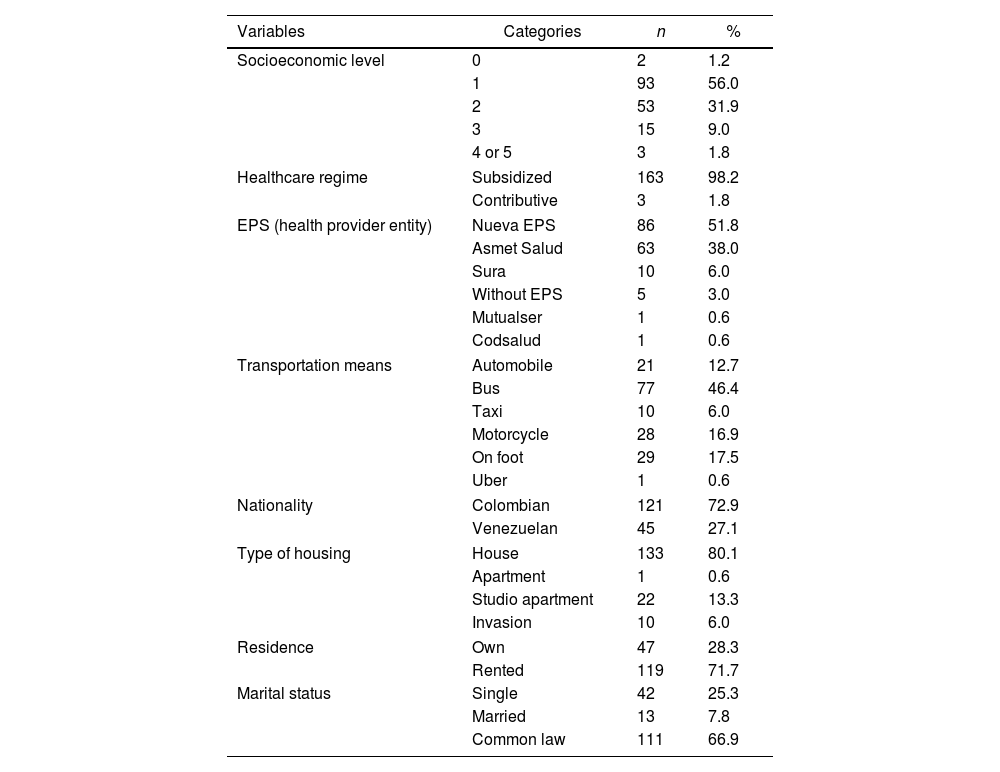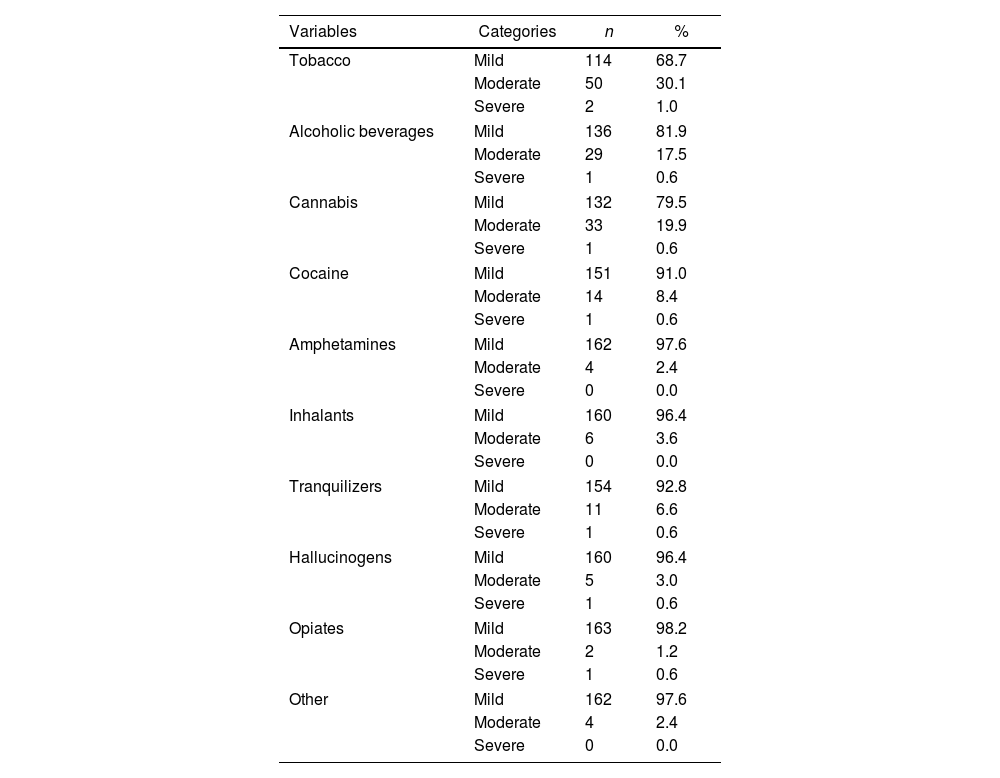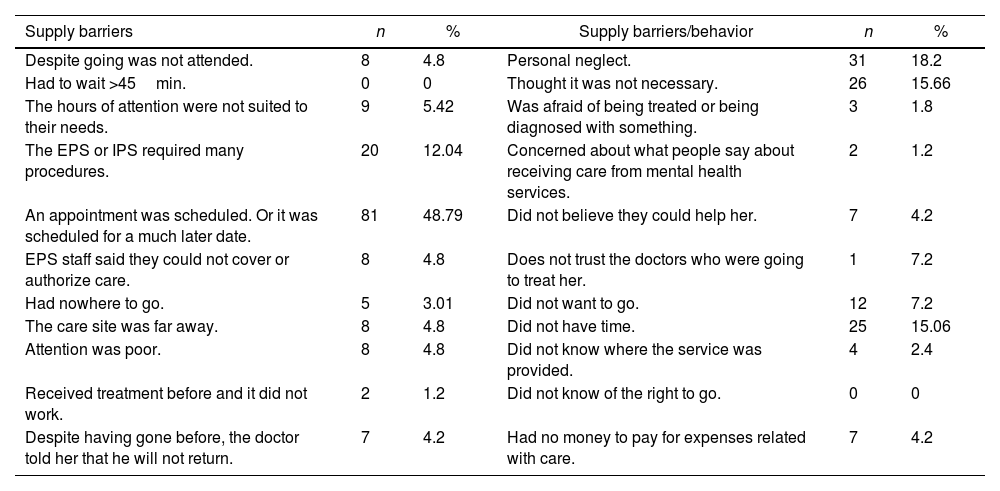Pregnancy is associated with multiple physiological changes. Anxiety, depression, suicide, and consumption of psychoactive substances during gestation have been phenomena rarely studied by Colombian academia. These disorders are among the principal causes of maternal morbidity–mortality; however, the presence of barriers to care constitutes a public health problem that must be studied.
MethodA prospective longitudinal observational descriptive study was conducted, during one year, with 166 pregnant women. The prevalence of these diseases was evaluated and the most significant supply and demand barriers were identified, for which a battery of mental health measurement instruments was applied to identify the risk of consuming psychoactive substances, depression, and anxiety.
ResultsThe most-frequent mental pathology was gestational depression, occurring in 57.22% of the sample; the second most-frequent pathology was gestational anxiety, diagnosed in 46.98% of the patients. The disorder due to consumption of most-frequent substances was smoking; followed by cannabis and alcohol. Access barriers, both in supply and demand, were present in most of the population; 53.01% of the pregnant women were not evaluated by psychology. The principal supply barrier was not assigning appointments or, failing that, these were assigned for a very distant date.
ConclusionsA clear relationship exists among depression and anxiety, number of children and age, and supply barriers and access to specialized mental health care. Our findings suggest a high frequency of access barriers in the gestating population with mental pathology.
El embarazo se asocia con cambios fisiológicos. La ansiedad, la depresión, el suicidio y el consumo de sustancias psicoactivas durante la gestación han sido fenómenos escasamente estudiados en Colombia. Estos trastornos son una de las principales causas de morbimortalidad materna; sin embargo, la presencia de barreras para la atención, constituyen una problemática de salud pública que debe ser estudiada.
MétodoSe ejecutó un estudio descriptivo observacional longitudinal prospectivo, durante un año, con 166 gestantes. Se evaluó la prevalencia de estas enfermedades, y se identificaron las barreras de oferta y demanda más significativas, para ello se aplicó una batería de instrumentos de medición de salud mental para identificar el riesgo de consumo de sustancias psicoactivas, depresión y ansiedad.
ResultadosLa depresión gestacional ocurrió en el 57,22% de la muestra; la ansiedad gestacional se presentó en el 46,98% de las pacientes. El trastorno por consumo de sustancias más frecuentes fue el tabaquismo; seguido del cannabis y el alcohol. Se presentaron barreras de acceso en la mayoría de la población. El 53,01% de las gestantes no fueron valoradas por psicología. La principal barrera de oferta fue el no agendamiento de citas.
ConclusionesExiste una relación entre depresión y ansiedad, número de hijos y edad, y barreras de oferta y acceso a atención especializada en salud mental. Nuestros hallazgos sugieren una alta frecuencia de barreras de acceso en la población gestante con enfermedad mental.









